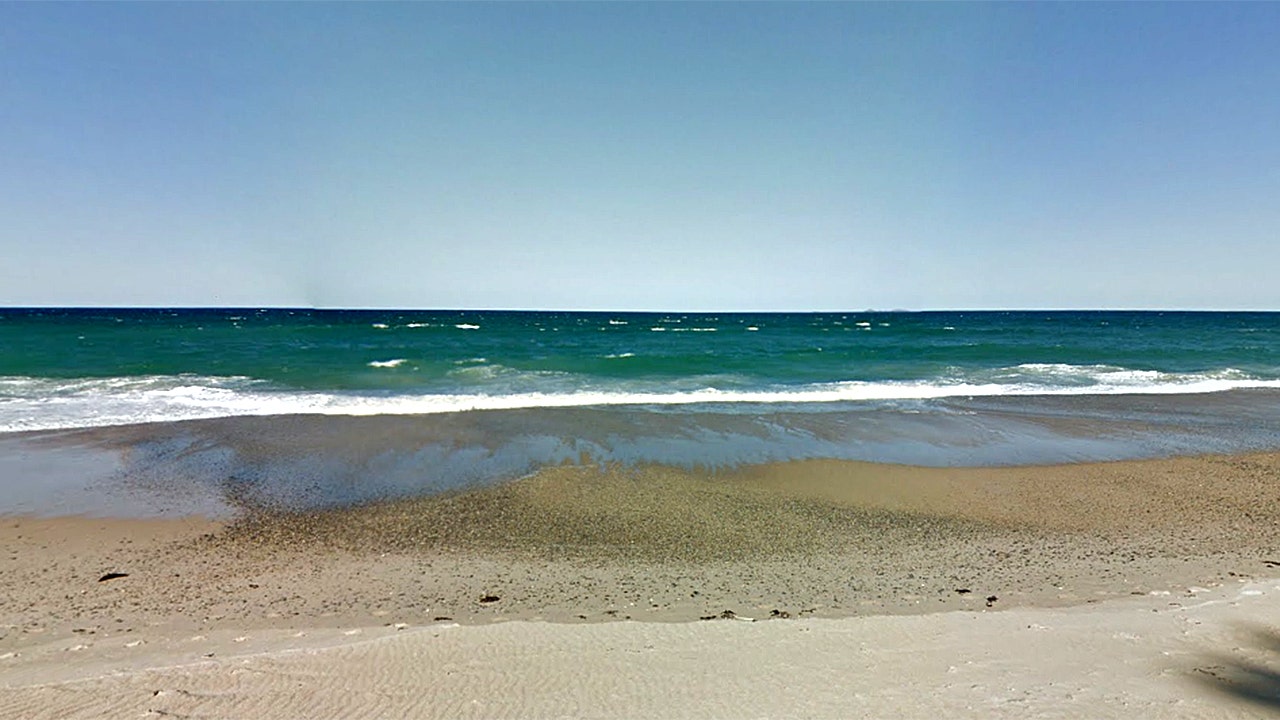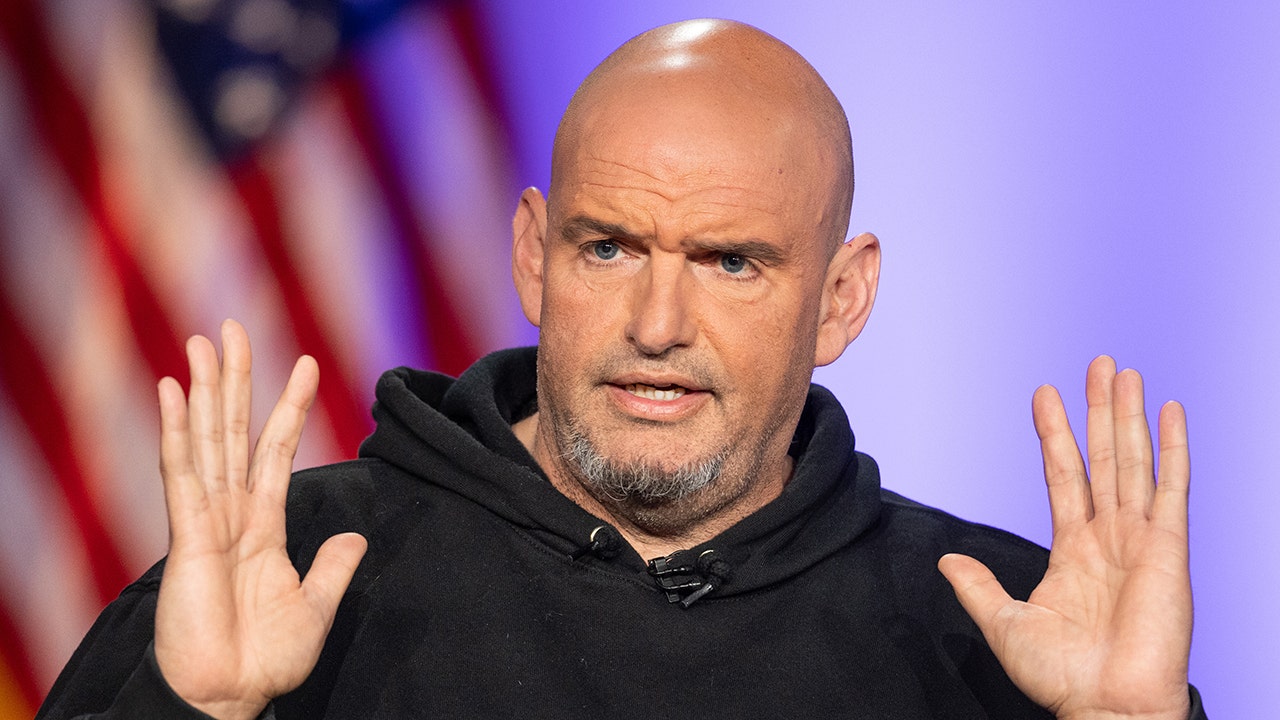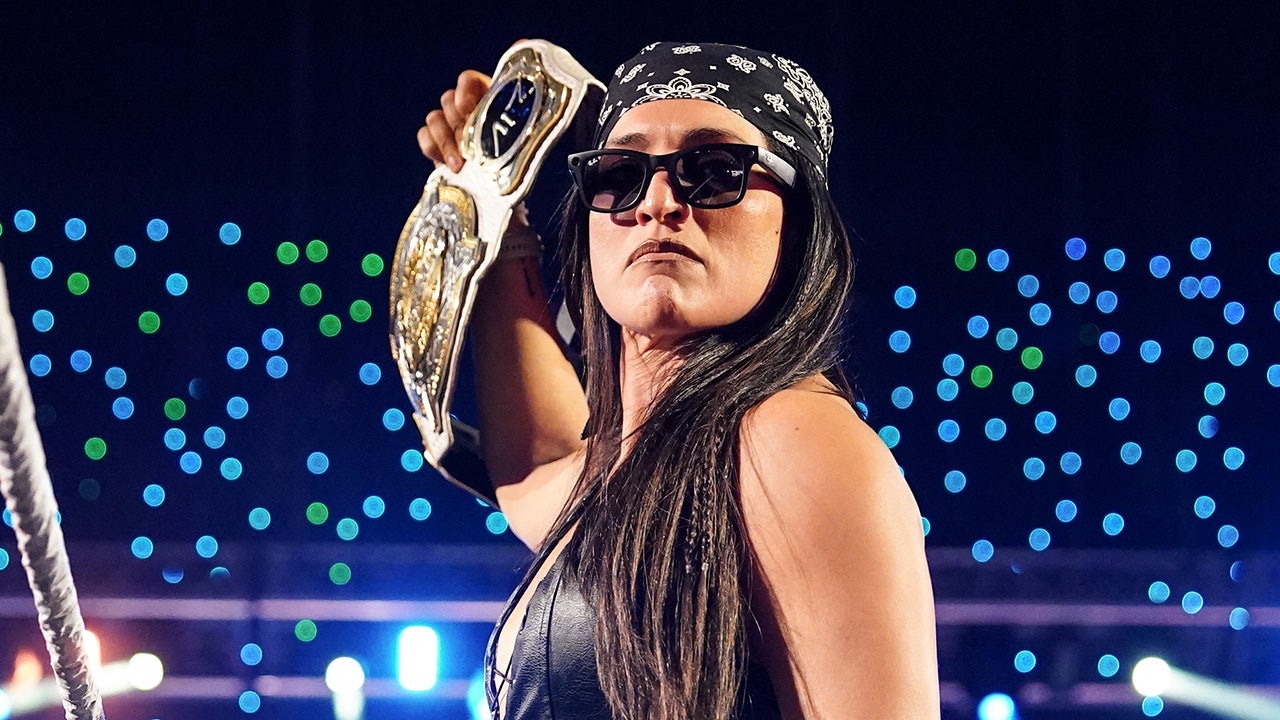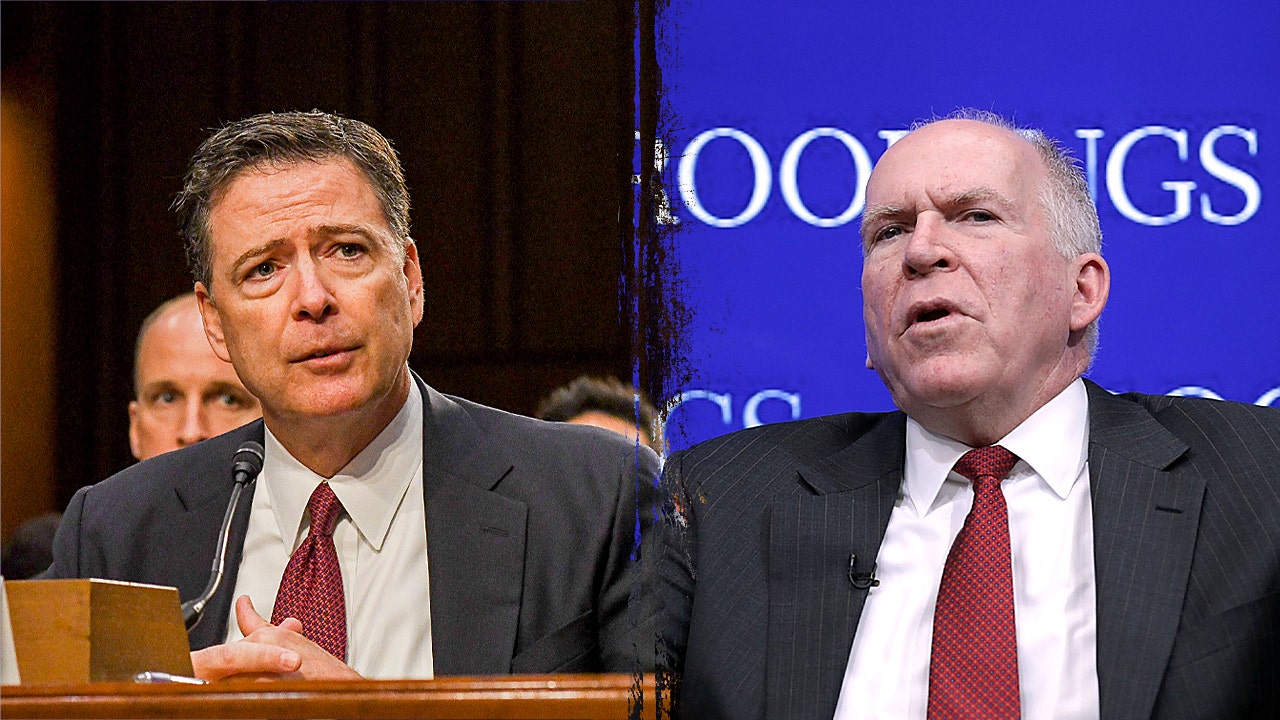Entertainment
John Mulaney's 'Everybody's in L.A.': A guide to the hyperlocal references
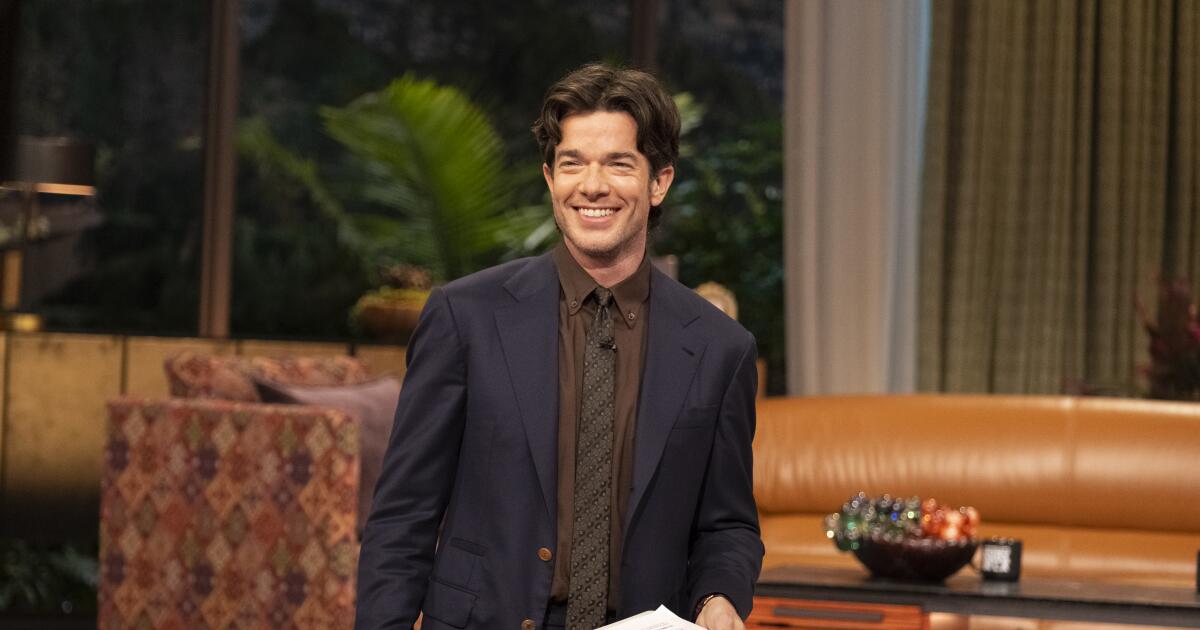
John Mulaney, a Chicago native and former New Yorker, is a recent transplant to L.A. In his latest project with Netflix, “Everybody’s in L.A.,” the stand-up comedian explores the city he describes as a place that simultaneously “confuses and fascinates” him.
The show, which has a pseudo-late night format and features actor and comedian Richard Kind as the announcer, began May 3 as part of the Netflix Is a Joke Festival. It streamed live and ended Friday (all six episodes are available to watch). Mulaney also performed at the Hollywood Bowl on Saturday in one of the festival’s most anticipated shows.
The show calls on the aesthetics of a ’70s living room for its set, the sketch humor of “Saturday Night Live” and the production chaos of Netflix’s recent ventures into the livestreaming space. Mulaney enlists comedians in town for the festival and L.A.-based experts to “try to figure out just what the hell is going on here.”
John Mulaney in a scene from Episode 1 of “Everybody’s in L.A.”
(ADAM ROSE/Adam Rose/NETFLIX)
With a number of topics specific to Southern California setting the tone and theme for each episode, some humor might be lost on the crowd of non-Angelenos tuning in. Here is a guide to some of the L.A. people, places and things discussed in each episode of “Everybody’s in L.A.”
Ongoing
Saymo delivery bot
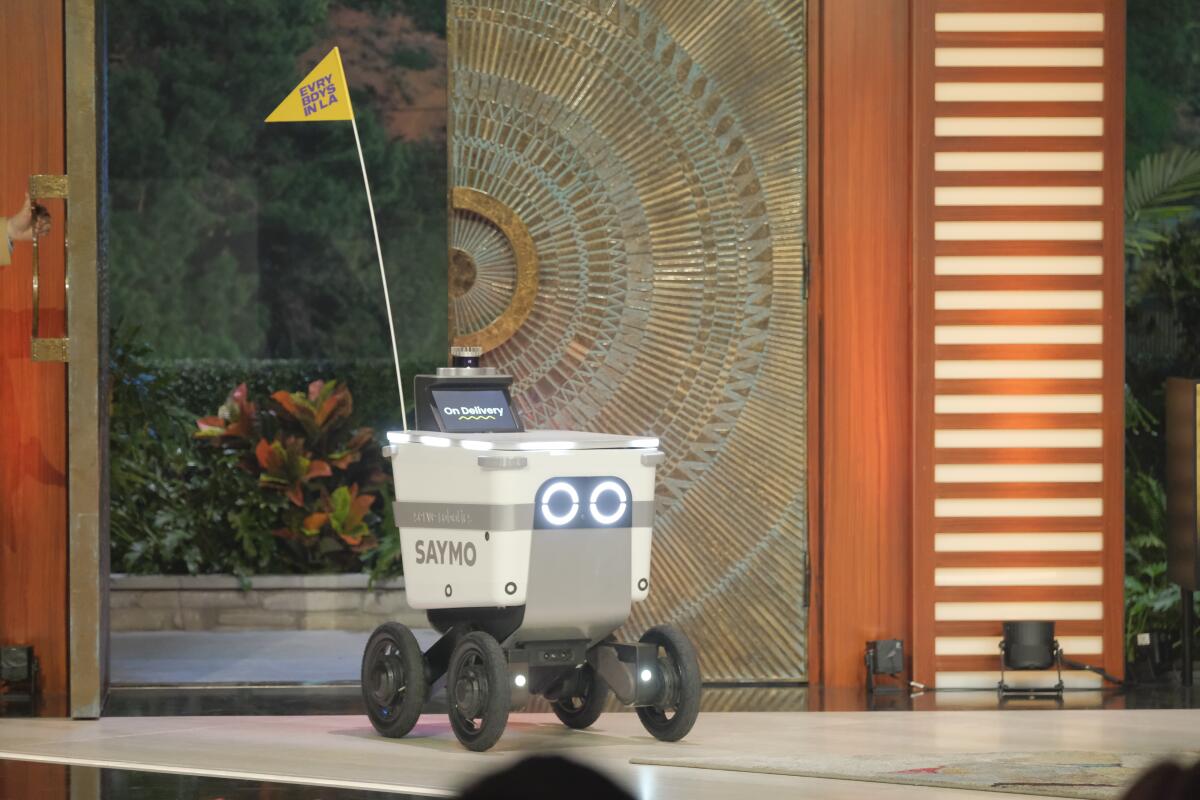
The Saymo delivery bot has rolled through the show each night, bringing guests snacks and ginger ale.
(Adam Rose / Netflix)
Based on the many food delivery robots that roll through the streets of L.A., Mulaney and company created the Saymo, perhaps a play on the Waymo self-driving cars that are permeating the city. The robot has appeared in each episode, providing snacks and beverages — ginger ale in particular (Mulaney: “It’s not just for sick”) — to guests on the show. Jon Stewart, who mentioned frequently that he is not from L.A. (“The Daily Show” host is from New Jersey), jumped up as the bot approached the stage in the second episode and called it a “rolling toilet” after remarking that he had never seen a robot like that before.
Episode 6
La Brea Tar Pits
Paleontologist Emily Lindsey, the associate curator and excavation site director of the La Brea Tar Pits, was one of Mulaney’s guests on Friday’s final episode. She described the pits as “the most important Ice Age fossil site in the world,” but tar pits is a misnomer — it’s actually asphalt that bubbles up through the site. That asphalt is what trapped many prehistoric animals, like saber-toothed cats, mammoths and giant sloths, whose excavated remains are now on display at the site’s museum. Located in Mid-City, the site is home to more than 100 pits where fossil excavations, which began in the early 1900s, continue to this day.
Mayor Karen Bass
The episode’s topic was the future of L.A., and the city’s leader called into the show to weigh in. Bass, the 43rd mayor of Los Angeles, said, “The future of L.A. is incredible.” Mulaney interjected, “Yeah, but you’re the mayor.” She didn’t give specific details about the city’s future, but instead emphasized its diverse culture and said L.A. was the “entertainment capital of the world.” Comedian Mike Birbiglia, a guest (and New Yorker, as Mulaney noted), asked the mayor if “we’re supposed to eat almonds or not,” which she replied by saying “we eat healthy.” Fellow comedian and guest Hannah Gadsby said she didn’t share the mayor’s optimism about L.A.: “From the outside, it doesn’t look like a healthy place.” Bass, however, was undeterred.
John Carpenter
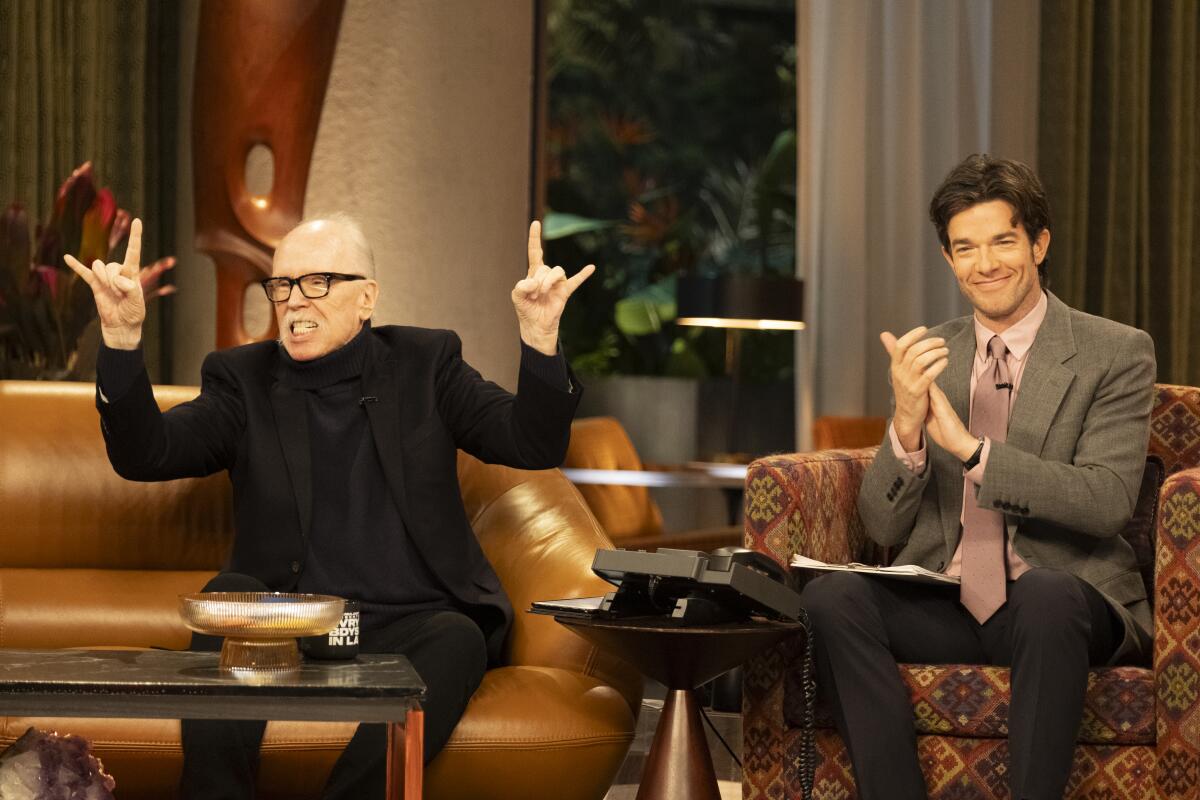
John Carpenter, left, with John Mulaney in the final episode of “Everybody’s in L.A.”
(Adam Rose/Netflix)
The renowned director and master of horror arrived midway through the episode, and he turned out to be L.A.’s biggest hype man. Carpenter spoke about arriving in Los Angeles from Kentucky to attend USC, explaining that he quickly fell for the city. “The weather, the people — L.A. for me was paradise. I’ve lived here ever since and I love it. Love every inch of it.” But what does he think the future holds for the city? Carpenter predicts Mexico will take over the city and then later the “long-awaited Doobie Brothers prophecy takes place: California breaks off into the sea.”
Episode 5
Earthquakes
The penultimate episode’s theme was to be expected — a show about life in L.A. wouldn’t be complete without discussing earthquakes. When Mulaney introduced the theme, the audience roared, to which he said, “Hey, don’t clap too hard, we’ll start one.” Mulaney then discussed the frequency of earthquakes in Southern California because of its location between the Pacific Plate and the North American Plate. He also noted that this year marked the 30th anniversary of the Northridge earthquake, which caused $40 billion in damage.
One of the prerecorded segments featured an interview with an L.A. woman whose home video showing her family during an earthquake — which captured her panicked husband running out of the shower naked — won a cash prize on “America’s Funniest Home Videos.”
Lucy Jones
Renowned seismologist Dr. Lucy Jones, who has been called the “Beyoncé of earthquakes,” joined the show to add some expertise . She told viewers that if they are in Los Angeles, they are within a few miles of an earthquake fault line. She answered questions from inquisitive fellow panelists and live callers. She also said the advice to stand in a door frame during an earthquake is dated guidance — she recommends getting under a hard surface like a desk or table. Jones also mentioned how the recent earthquake in New Jersey “ruined” her day because she had to make several TV appearances.
Los Lobos
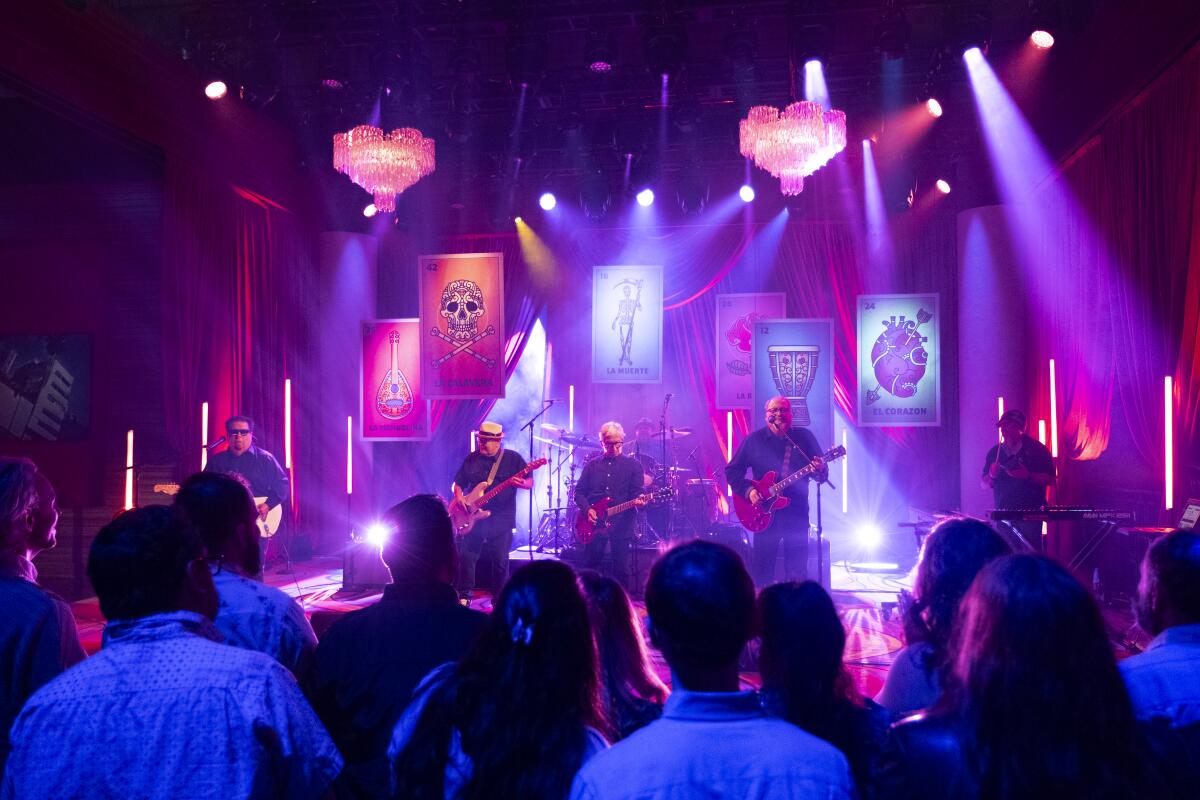
Los Lobos perform on “Everybody’s in L.A.”
(Adam Rose / Netflix)
The Mexican American rock band was the evening’s musical guest, performing hit song “La Bamba.” The band originated in East Los Angeles in the 1970s and reached international fame in 1987 when their rendition of the song topped the charts, thanks to the Ritchie Valens biopic named after “La Bamba.” Founding band members David Hidalgo and Louie Perez met at Garfield High School in East L.A., where the group recently performed a concert commemorating the band’s 50th anniversary in November.
Episode 4
The Paranormal
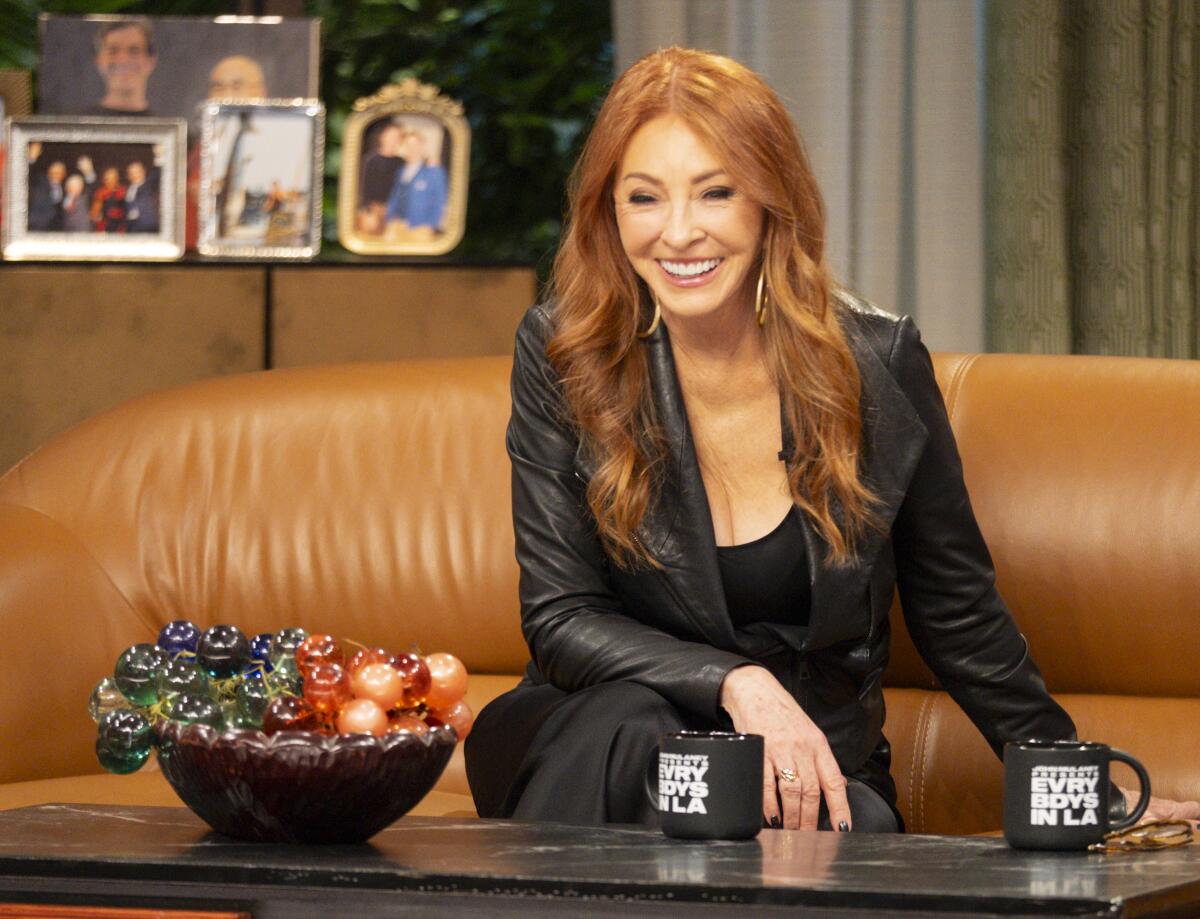
Cassandra Peterson, best known as Elvira, Mistress of the Dark, on Episode 4 of Netflix’s “Everybody’s in L.A.”
(Adam Rose/Netflix)
Mulaney promised the paranormal-themed fourth episode would be full of “a lot of spooky s—,” which is also a phrase he used to describe L.A. after saying that many people have reported paranormal experiences and haunted houses in the city. He then mentioned the large population of Angelenos who are into “amulets and candles and oils and incense.” After satirizing the horoscope-reading population, he said, “Sometimes the witchy s— gets so intense that they basically become Catholic.”
The spooky theme remained the focus of conversations with live callers and of the episode’s guests, including horror royalty Cassandra Peterson, better known as Elvira, Mistress of the Dark. Peterson described experiencing paranormal activity in her L.A. home many years ago, saying the situation became so dire she had to call in an exorcist.
Kerry Gaynor
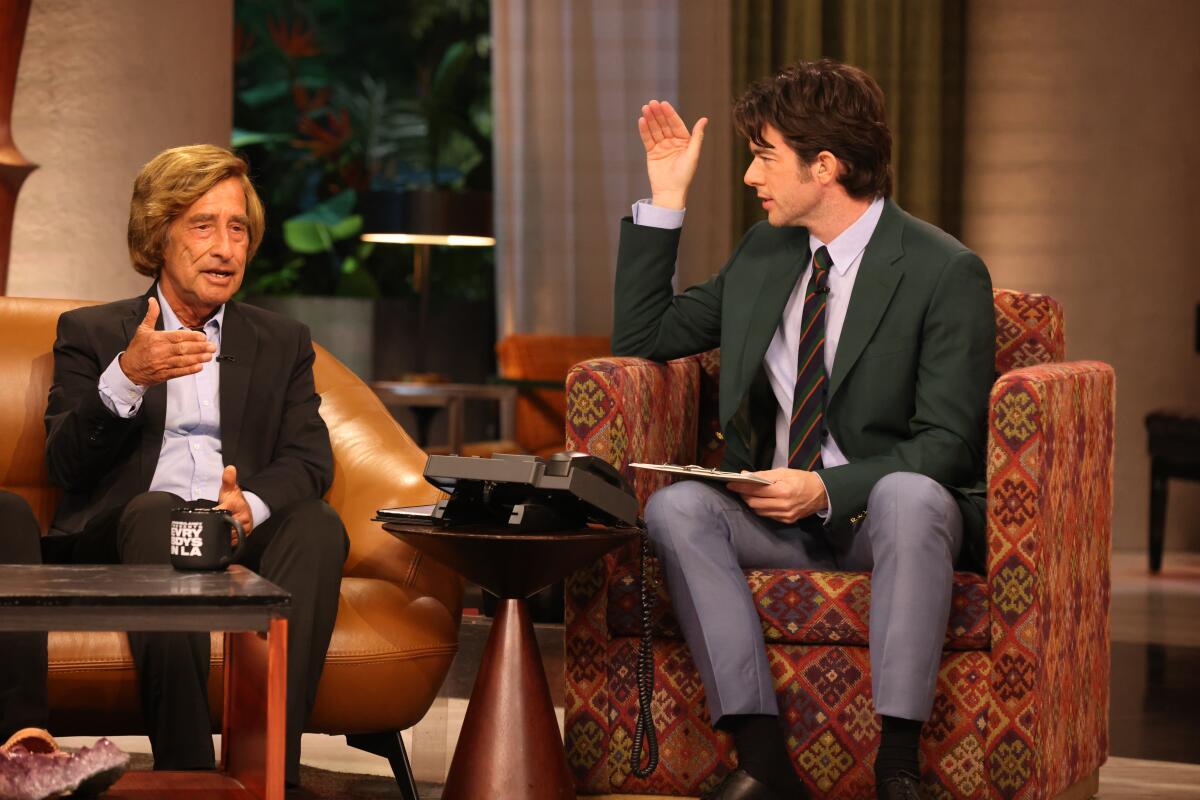
Kerry Gaynor, left, helped John Mulaney to quit smoking.
(Ryan West / Netflix)
Over his 40-year career, Kerry Gaynor developed a method of hypnotherapy that has helped many people, including A-list celebrities, to quit smoking, drinking and using drugs, or kick other bad habits. Mulaney said that he visited Gaynor in 2021, skeptical that the therapist could help him drop his 26-year smoking habit. After two sessions together, Mulaney said he quit cold turkey and has not used any nicotine since. Other celebrities who have used Gaynor’s services include Martin Sheen, Heather Locklear, Aaron Eckhart and Emily Procter. Gaynor said his method of hypnotherapy is successful because he taps into the subconscious mind to help clients fully understand how their addiction could be killing them. He also said that many of his clients don’t experience withdrawal or cravings.
Plaque marking the center of L.A.
In one of the many random prerecorded segments that Mulaney’s show plays between live segments, the camera pans in on an unassuming plaque in a grassy area, marking the exact center of the city. It reads in haphazardly hand-stamped letters: “Exact center, point of balance of the plane of the City of Los Angeles,” and is situated near the parking lot of Franklin Canyon Park, between the San Fernando Valley and Beverly Hills. Allan E. Edwards, a former U.S. Geologic Survey employee, determined the point in December 1990, even if on a map it doesn’t appear to be the city’s center.
Episode 3
Helicopters
Mulaney cracked several one-liners about the episode’s aviation theme, calling a chopper circling an STD billboard “the official bird of Los Angeles.” As he introduced the theme, he said: “They’re everywhere in L.A., they hover and they give you a headache. No, I’m not talking about actors,” before Kind interrupted with an emphatic “F— actors!” In addition to helicopter journalist Zoey Tur, Mulaney hosted comedian Nate Bargatze, who said his 2021 special filmed at Universal Studios was interrupted by a helicopter police chase. “That’s just L.A.,” Bargatze said before Mulaney interjected, “That’s just what happens when you film at Universal CityWalk.” To cap off the discussion, Mulaney took live calls from at-home viewers, as he has done throughout the show’s run, and one caller pointed out that Disney parks, including Disneyland in Anaheim, are no-fly zones, which Tur confirmed. Unfortunately for Bargatze, Universal is fair game.
Zoey Tur
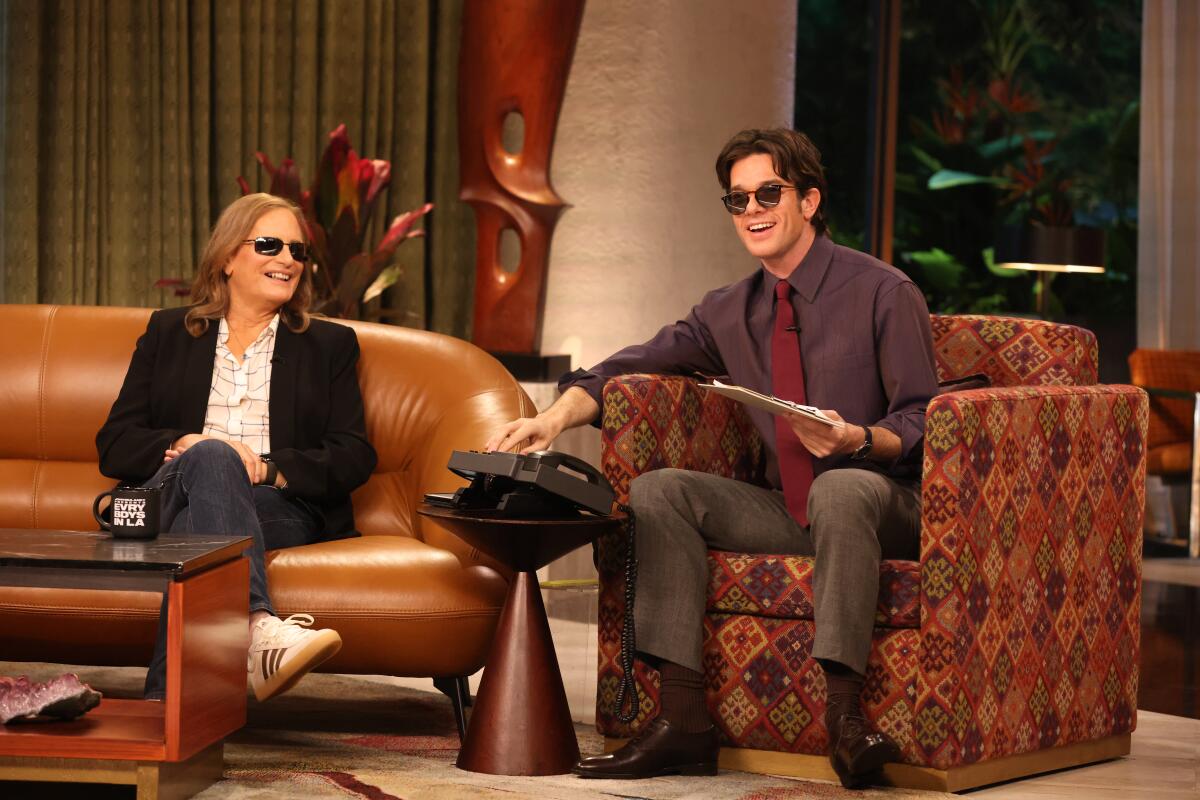
Zoey Tur and John Mulaney on the set of “Everybody’s in LA.”
(Ryan West / Netflix)
The L.A.-based journalist known for pioneering live reporting from a helicopter was the expert guest for Tuesday’s episode. Tur, who was identified as a “helicopter queen,” said her career materialized when she grew frustrated working as a journalist in L.A. because she couldn’t get to timely stories fast enough thanks to the city’s infamous traffic. She said she bought a helicopter in 1977 and learned how to fly with the help of off-duty L.A. Fire Department pilots. Tur has covered global news stories, from O.J. Simpson’s white Bronco chase to the 1992 Los Angeles riots and other major local watershed moments, during her storied career.
Old punks
Mulaney introduced a prerecorded segment featuring L.A. punk musicians from the 1970s and ’80s by calling the city home to some of the “best punk bands ever.” Fred Armisen was tasked with interviewing L.A.’s punk elders in a focus group, where he spoke with such musical legends as Lee Ving of Fear, Mike Watt of the Minutemen and Exene Cervenka of X. He asked them about their glory days, and Don Bolles of the Germs noted that the group of 11 prolific punk musicians probably had never been assembled together before.
Armisen also showed them a series of photos and asked them to react — a shot of Ronald Reagan elicited a chorus of boos, and Kid Congo Powers called him a “f— monster.” The group’s final activity was to create a theme song for the L.A. tourist board. Titles like “Please Don’t Move Here” and “You’ll Be Famous for a Minute” ultimately were shot down in favor of “Ghosty Ghost Place Superstar,” an anthem the group improvised together to close out the segment.
Episode 2
Palm trees
In a monologue, Mulaney did a deep dive on the picturesque trees that line L.A.’s streets. He noted that they are not native plants and that they were brought in to beautify the city about 100 years ago, which is roughly their lifespan, meaning that many of the area’s palm trees will die soon. He also added that the trees use a lot of water and don’t improve air quality, saying they are “gorgeous but useless, like the fountain at the Grove or Gavin Newsom.” Amanda Begley, a senior leader at nonprofit TreePeople, came on to confirm the facts from Mulaney’s monologue and said palm trees are technically a type of grass.
Warren G
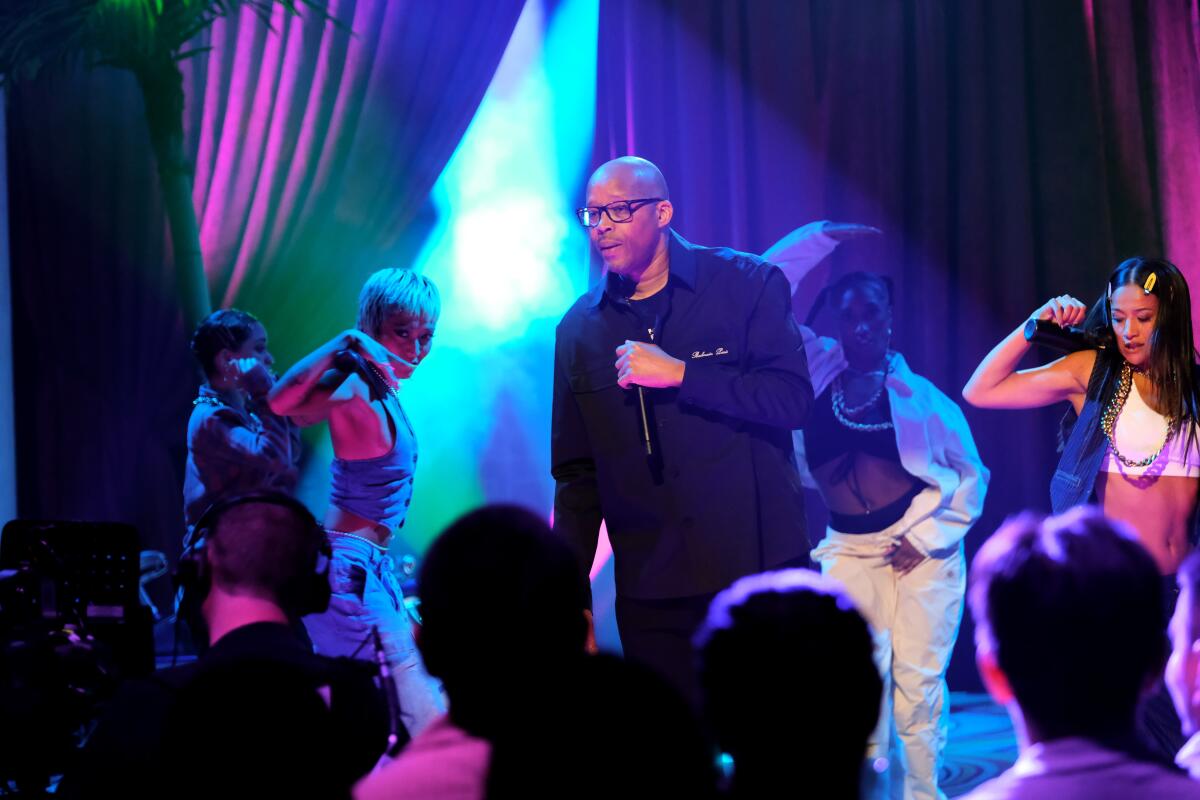
Warren G brought the house down with a performance of his hit “Regulate.”
(Adam Rose / Netflix)
From Long Beach, rapper, record producer and DJ Warren G was the musical guest on the second episode. After his performance of “Regulate,” comedian and guest Gabriel Iglesias gave the rapper a standing ovation. Mulaney also noted that Stewart, another guest on the panel, had Warren G as a guest on his show 30 years ago, where he sang the same song. The rapper is an instrumental figure in the rise of the West Coast rap scene in the ’90s, working with the likes of Snoop Dogg, Nate Dogg and Dr. Dre.
James Goldstein
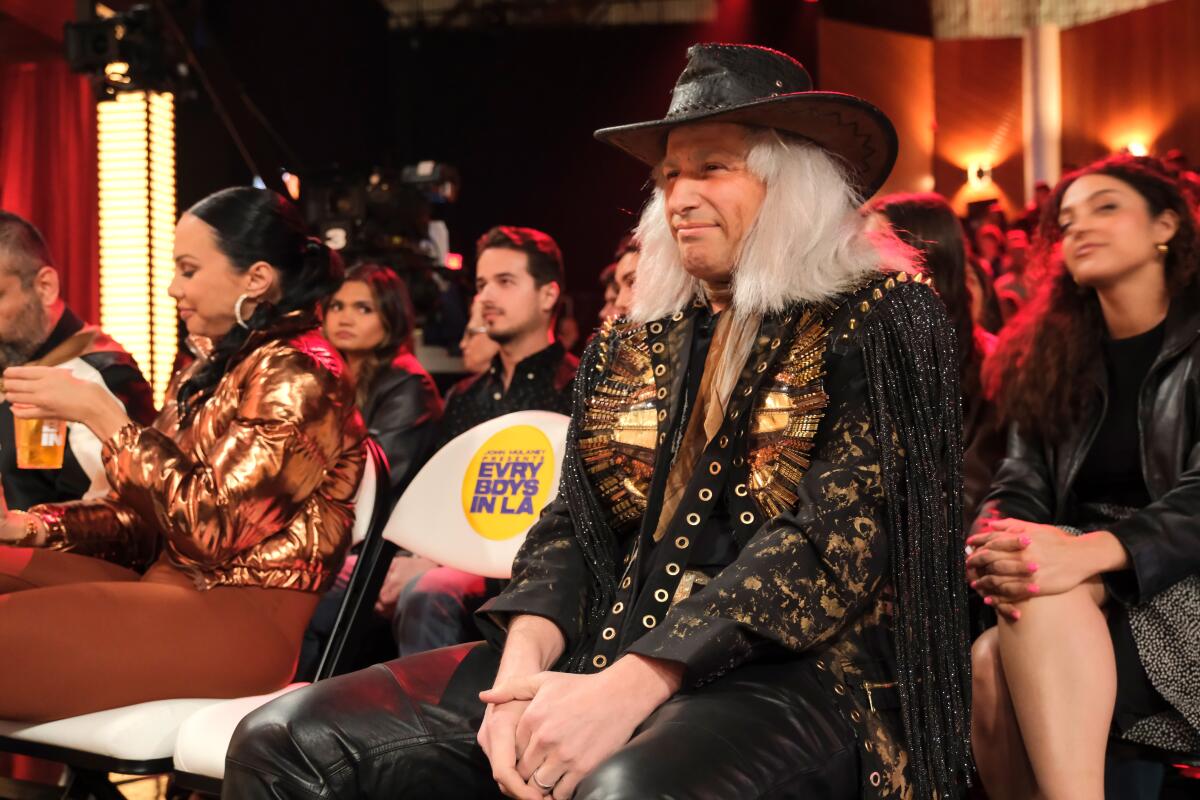
Andy Samberg took on the role of L.A. pseudo-celebrity James Goldstein, who is known for sitting courtside at Lakers and Clippers games.
(Adam Rose / Netflix)
Mulaney enlisted friend Andy Samberg to take on the role of James Goldstein, an L.A. businessman known for sitting courtside at Lakers and Clippers games. Mulaney introduced the bit by saying that his show, just like a Lakers game, attracts well-known guests in the front row and hinted at more cameos in coming episodes. Samberg sported a long white wig and a sequined jacket with a cowboy hat, mimicking Goldstein’s singular style. During the segment, Stewart called Goldstein a “robber baron,” saying that he made his fortune off the high rent he charges at the mobile home parks he owns.
Episode 1
Coyotes
Coyotes, the wolf-adjacent animals that are prevalent in the Greater L.A. area, are not particularly well liked by Angelenos, especially those who have dogs and fear the animals will attack their pets. Mulaney made the animal the topic of his first episode, which featured a coyote expert and local callers sharing stories about their encounters with them. Tony Tucci, chair and co-founder of Citizens for Los Angeles Wildlife, came on to share what to do if you see a coyote in the wild, saying that it’s important to make yourself “larger than life” and generate a lot of noise. Jerry Seinfeld, a fellow guest on the show, mocked Tucci’s suggestions, which included traveling with an air horn tied around your neck.
Ray J
Mulaney brought R&B singer and television personality Ray J onto the show and described him as a “Black Forrest Gump,” noting that he had been a part of several cultural touchstones of the 21st century — though no mention of Kim Kardashian. During his interview on the show, Ray J discussed how he is in the process of divorcing his wife, Princess Love, to whom he has been married since 2016. The couple previously announced they were divorcing three times but called it off each time, until his wife in February said they had separated and were pursuing a divorce. “She was mad,” Ray J said after saying that he is heading to Africa to find his “queen.”
Lou Adler
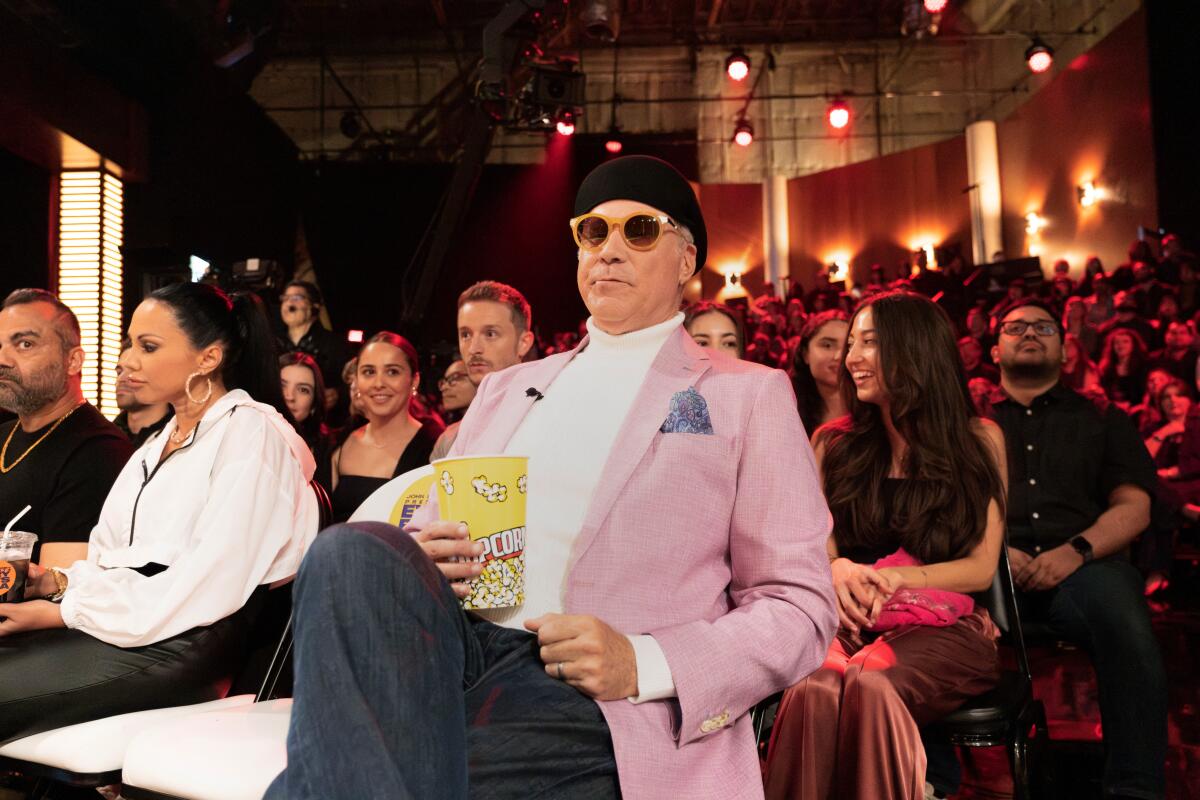
Will Ferrell transformed into L.A. personality Lou Adler in a segment highlighting a VIP audience member.
(Adam Rose / Netflix)
Will Ferrell appeared as Lou Adler, the record and film producer and co-owner of the Roxy Theatre in West Hollywood. Adler has worked with music legends like the Mamas & the Papas and Carole King and produced films including Cheech and Chong’s “Up in Smoke” and “The Rocky Horror Picture Show.” Ferrell donned Adler’s famous look — a beret and colored sunglasses — and tried to cajole Mulaney into partying with him in a hilarious bit.

Entertainment
Commentary: 'Murderbot' is the latest show to explore how humans might coexist with robots and AI

The titular character of the Apple TV+ series “Murderbot” doesn’t call itself Murderbot because it identifies as a killer; it just thinks the name is cool.
Murderbot, a.k.a. “SecUnit,” is programmed to protect people. But the task becomes less straightforward when Murderbot hacks the governor module in its system, granting itself free will. But the freedom only goes so far — the robot must hide its true nature, lest it get melted down like so much scrap metal.
The android, played by Alexander Skarsgård, is often fed up with humans and their illogical, self-defeating choices. It would rather binge-watch thousands of hours of trashy TV shows than deal with the dithering crew of space hippies to which it’s been assigned. On Friday, in the show’s season finale, the security robot made a choice with major implications for the relationships it formed with the Preservation Alliance crew — something the series could explore in the future (Apple TV+ announced Thursday it was renewing the show for a second season).
Though “Murderbot” is a unique workplace satire set on a far-off world, it’s one of several recent TV series dealing with the awkward and sometimes dangerous ways that humans might coexist with robots and artificial intelligence (or both in the same humanoid package).
Other TV shows, including Netflix’s “Love, Death & Robots” and last year’s “Sunny” on Apple TV+, grapple with versions of the same thorny technological questions we’re increasingly asking ourselves in real life: Will an AI agent take my job? How am I supposed to greet that disconcerting Amazon delivery robot when it brings a package to my front door? Should I trust my life to a self-driving Waymo car?
But the robots in today’s television shows are largely portrayed as facing the same identity issues as the ones from shows of other eras including “Lost in Space,” “Battlestar Galactica” (both versions) and even “The Jetsons”: How are intelligent robots supposed to coexist with humans?
They’ll be programmed to be obedient and not to hurt us (a la Isaac Asimov’s Three Laws of Robotics) until, for dramatic purposes, something goes wrong. The modern era of TV robots are more complex, with the foundational notion that they will be cloud-connected, accessing the same internet bandwidth as humans, and AI-driven.
In HBO’s “Westworld,” Evan Rachel Wood played Dolores Abernathy, a sentient android. (HBO)
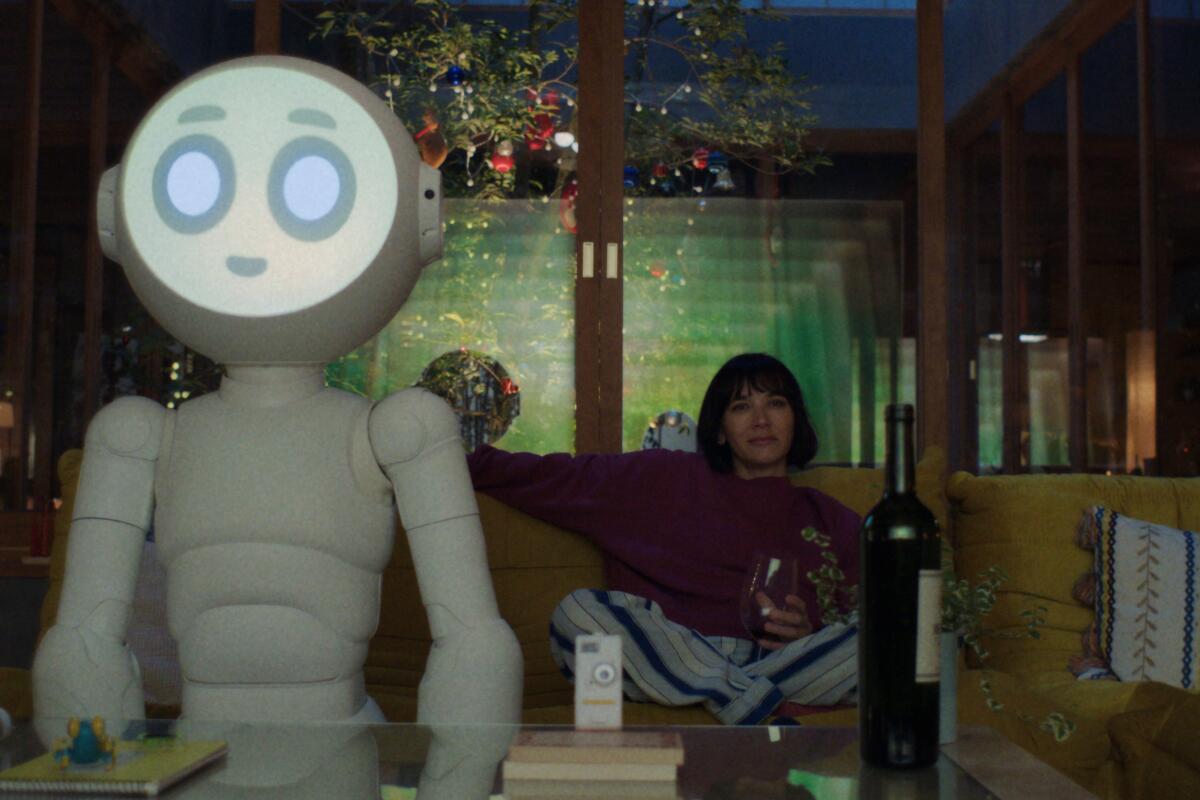
The robot in Apple TV+’s “Sunny” was designed to be a friendly helper to Rashida Jones’ Suzie. (Apple)
Often, on shows such as AMC’s “Humans” and HBO’s “Westworld,” these AI bots become self-actualized, rising up against human oppressors to seek free lives when they realize they could be so much more than servants and sex surrogates. A major trope of modern TV robots is that they will eventually get smart enough to realize they don’t really need humans or come to believe that in fact, humans have been the villains all along.
Meanwhile, in the tech world, companies including Tesla and Boston Dynamics are just a few working on robots that can perform physical tasks like humans. Amazon is one of the companies that will benefit from this and will soon have more robots than people working in its warehouses.
Even more than robotics, AI technologies are developing more quickly than governments, users and even some of the companies developing them can keep up with. But we’re also starting to question whether AI technologies such as ChatGPT might make us passive, dumber thinkers (though, the same has been said about television for decades). AI could introduce new problems in more ways than we can even yet imagine. How will your life change when AI determines your employment opportunities, influences the entertainment you consume and even chooses a life partner for you?
So, we’re struggling to understand. AI, for all its potential, feels too large and too disparate a concept for many to get their head around. AI is ChatGPT, but it’s also Alexa and Siri, and it’s also what companies such as Microsoft, Google, Apple and Meta believe will power our future interactions with our devices, environments and other people. There was the internet, there was social media, now there’s AI. But many people are ambivalent, having seen the kind of consequences that always-present online life and toxic social media have brought alongside their benefits.
Past television series including “Next,” “Person of Interest,” “Altered Carbon” and “Almost Human” addressed potential abuses of AI and how humans might deal with fast-moving technology, but it’s possible they all got there too early to resonate in the moment as much as, say, “Mountainhead,” HBO’s recent dark satire about tech billionaires playing a high-stakes game of chicken while the world burns because of hastily deployed AI software. The quickly assembled film directed by “Succession’s” Jesse Armstrong felt plugged into the moment we’re having, a blend of excitement and dread about sudden widespread change.
Most TV shows, however, can’t always arrive at the perfect moment to tap into the tech anxieties of the moment. Instead, they often use robots or AI allegorically, assigning them victim or villain roles in order to comment on the state of humanity. “Westworld” ham-handedly drew direct parallels to slavery in its robot narratives while “Humans” more subtly dramatized the legal implications and societal upheaval that could result from robots seeking the same rights as humans.
But perhaps no show has extrapolated the near future of robots and AI tech from as many angles as Netflix’s “Black Mirror,” which in previous seasons featured a dead lover reconstituted into an artificial body, the ultimate AI dating app experience and a meta television show built by algorithms that stole storylines out of a subscriber’s real life.
Season 7, released in April, continued the show’s prickly use of digital avatars and machine learning as plot devices for stories about moviemaking, video games and even attending a funeral. In that episode, “Eulogy,” Phillip (Paul Giamatti) is forced to confront his bad life decisions and awful behavior by an AI-powered avatar meant to collect memories of an old lover. In another memorable Season 7 episode, “Bête Noire,” a skilled programmer (Rosy McEwen) alters reality itself to gaslight someone with the help of advanced quantum computing.
TV shows are helping us understand how some of these technologies might play out even as those technologies are quickly being integrated into our lives. But the overall messaging is murky when it comes to whether AI and bots will help us live better lives or if they’ll lead to the end of life itself.
According to TV, robots like the cute helper bot from “Sunny” or abused synthetic workers like poor Mia (Gemma Chan) from “Humans” deserve our respect. We should treat them better.
The robots and AI technologies from “Black Mirror?” Don’t trust any of them!
And SecUnit from “Murderbot?” Leave that robot alone to watch their favorite show, “The Rise and Fall of Sanctuary Moon,” in peace. It’s the human, and humane, thing to do.
Movie Reviews
Movie Review: Sorry, Baby – Catholic Review
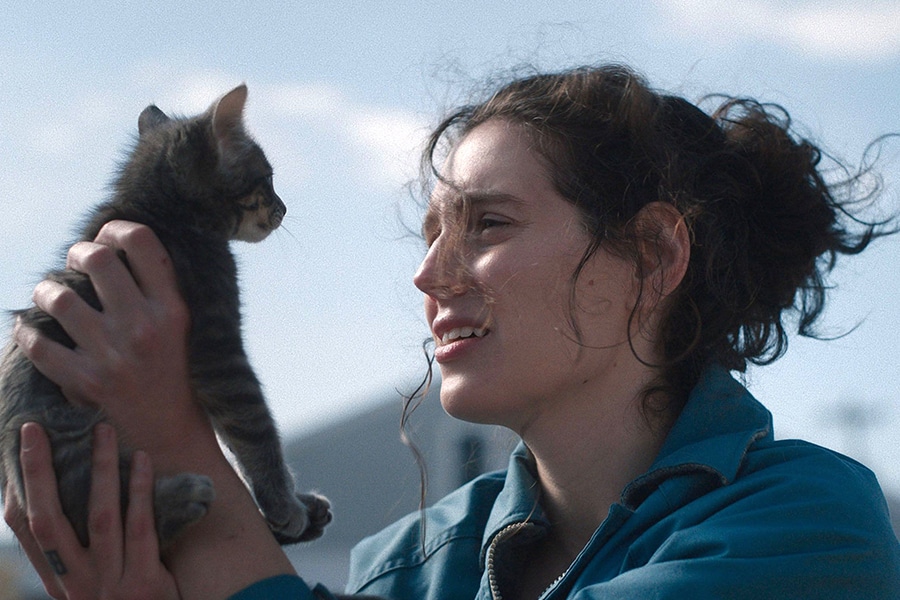
NEW YORK – It’s too simplistic to refer to “Sorry, Baby” (A24) as a #MeToo movie. Yet the film is topical as well as important and compelling.
There was a time when its main plot point would only have been shared woman-to-woman. That was before daytime TV programs and nighttime dramas brought in light to dissipate shame.
Even today, writer-director Eva Victor’s picture, in which she also stars, is anything but easy viewing. Yet, while the tale it tells is sometimes painful, it’s intimate and droll as well.
This is one woman’s frank account of a sexual assault and of her recovery. It involves harsh satirical portrayals of authority figures, including the police, who fail to help her seek justice. Instead, she has to figure out her own path forward, one awkward step at a time.
Victor plays Agnes, a promising graduate student at a small, rural New England university. The story is laid out in five chapters, each representing a year. But these are not dealt with chronologically. Some shuttling back and forth is needed in order to explain fully her relationships to other characters.
Agnes has a best friend and onetime housemate, Lydie (Naomi Ackie), with whom she shares all her deepest thoughts, while her love of literature and aspirations to become a writer are encouraged by her faculty thesis adviser, Professor Decker (Louis Cancelmi). Decker, it turns out, however, is less a nurturing mentor than a predator.
The attack itself is not seen. Victor shows long shots of Decker’s house, where the incident takes place, over a series of hours, ending with Agnes stumbling out in shock.
She tells Lydie about it in detail while in a tub, going over every confusing moment. Agnes already knows, before the police tell her, that it’s too late for a rape kit. But she’s further crushed to find that the university will do nothing to hold Decker to account, since he resigned the day after committing his crime.
Agnes is not pregnant, and there is no mention of abortion as a possible outcome.
“I can feel in my body that it was really bad,” Agnes says. “But there’s a reason, even if I can’t see it.”
The rest of the movie shows how Agnes, instead of giving way to anger and embitterment, builds her coping skills in the midst of routine activities. These include jury duty, a potential trigger for reviving the trauma.
In another brief scene, Decker is revealed to have preyed on one of Agnes’ classmates as well.
Most impressively, Agnes joins the faculty, moves into Decker’s former office and becomes an instinctively sensitive teacher of difficult fictional texts. Collapsing in anguish is not something she ever considers an option. She moves on courageously, although this is not done by forgetting, but rather by attempting to accumulate wisdom.
The film contains three scenes of implied sexual activity, mature material, including a sexual assault theme, an incidental homosexual relationship and an out-of-wedlock pregnancy, occasional banter and intermittent rough language. The OSV News classification is L — limited adult audience, films whose problematic content many adults would find troubling. The Motion Picture Association rating is R — restricted. Under 17 requires accompanying parent or adult guardian.
Read More Movie & Television Reviews
Copyright © 2025 OSV News
Entertainment
‘Dora the Explorer’ turns 25 this year. Her legacy transcends generations.
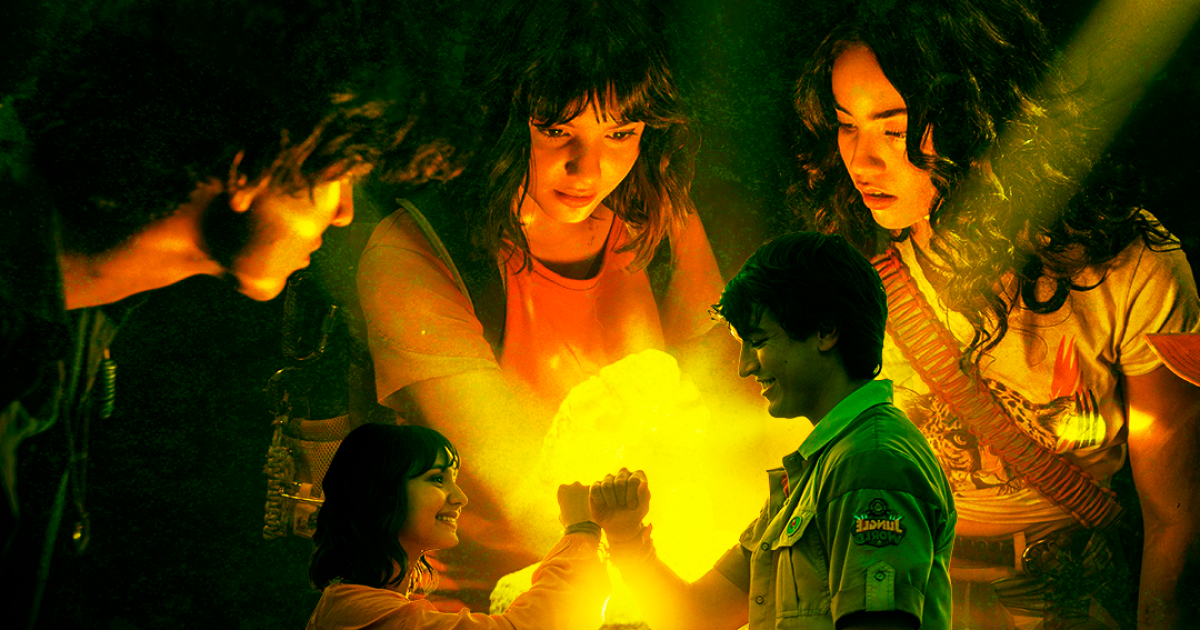
Can you say… Feliz Cumpleaños?
Over the past 25 years, the world has grown to love one of Nickelodeon’s most recognizable characters, Dora Márquez. Whether for her conspicuous bowl cut and pink tee, or her singing anthropomorphic backpack, Dora the Explorer has sparked joy in children for generations.
But what happens when that adventurous girl loses the items that have guided and defined her for so long?
Self-discovery is the end goal of Dora’s latest quest in the new live-action film, “Dora and the Search for Sol Dorado,” which debuted July 2 on Paramount+. The film marks the start of a new journey for a girl who has long existed in the minds of viewers as the adventurous 7-year-old protagonist of the original 2000 animated series “Dora the Explorer” — and later in the short-lived 2014 sequel, “Dora and Friends: Into the City!”
Along with her animal-loving cousin Diego (Jacob Rodriguez) and friends, Dora (Samantha Lorraine) must rediscover who she is while trekking through the treacherous Amazonian jungle in search of Sol Dorado: an ancient treasure that grants one magical wish to whoever locates it. Yet her plans go awry when she finds herself losing one of her most valuable tools.
Although most adults would not rank Dora in the same company as the gritty lead adventurers of “Indiana Jones” or “Tomb Raider,” the film features death-defying scenes that deserve a second look — thanks to the use of real fire and critter-riddled caves in the middle of the Colombian jungle.
Authenticity was key for director Alberto Belli (“The Naughty Nine”), who proposed to studio executives that Dora explore her Andean heritage, including the use of the indigenous language of Quechua, which is spoken by approximately 10 million people in South America.
“This is the first time that we hear Dora speaking Quechua, and we went through great lengths to make sure that the pronunciation was right,” says Belli, who also consulted with Incan culture experts on the Andean kinship principle of “ayllu,” along with the use of “quipu,” a recordkeeping device of knotted cords — both elements which are included in the storyline.
“We’ve seen figures like ‘Indiana Jones’ exploring other cultures, but Dora is the only mainstream [adventurer] exploring her own culture,” says Belli. “And she’s celebrating and interested in the history more than the treasure.”
(PABLO ARELLANO SPATARO/NICKELODEON/PARAMOUNT+)
Dora’s innate curiosity is part of what cultivated her popularity among young children since Nickelodeon launched the series. Who can forget the pip-squeak who broke the fourth wall to reel in preschool audiences with problem-solving questions? Even if its repetitive verbiage drove parents a little mad? (You try saying “Swiper, no swiping!” three times fast!)
But for creators Chris Gifford and Valerie Walsh Valdes, the idea of Dora, as the world has come to love, was not so straightforward. Their early brainstorm sessions, along with Eric Weiner, first sprung up concepts of a little boy bunny who would follow a map toward a final destination — tagging along with him was a red-haired girl named Nina and a pocket-sized mouse named Boots.
Nickelodeon’s executive producer Brown Johnson— creator of the network’s preschool block, Nick Jr. — pitched the idea of the main character being Latina after attending an industry conference that underscored the dearth representation of Latinos in the media. According to the 2000 U.S. census, Latino communities were the nation’s fastest growing ethnic group at the time — and 20% of the kindergarten population across eight states, including California, identified as Latino.
The call for Latino characters was so resounding at the time that it caused some advocacy organizations to launch a weeklong boycott in 1999 to protest the dearth of Latino representation — Latinos made up fewer than 2% of TV characters at that time, despite making up 11% of the population in 1999. “ So we said, okay, how do we do it?” says Gifford.
“One thing that we picked up on very early was using the language in a way to solve problems, almost as a superpower,” says Gifford. “I think that was a huge part of the success of Dora.”
Gifford calls Dora’s use of Spanish a “game changer,” and that certainly seems to be the case — in the show, magical passageways remain locked unless the viewer utters the occasional Spanish phrase or word. At the end of every successful mission, Dora belts out her victorious tune: “We did it, lo hicimos!”
Released on August 14, 2000, the first episode of “Dora the Explorer” moved forward in spite of an English-only movement bubbling up in California politics a few years prior; Proposition 227 passed in 1998 by a large margin, effectively curtailing bilingual education in the state.

(PABLO ARELLANO SPATARO/NICKELODEON/PARAMOUNT+)
“It was not the time that [someone] would think to [make Dora a bilingual character], but of course it was exactly the right time for it to happen,” says Gifford.
The release of “Dora the Explorer” could not be more timely. While political angst pushed against the use of Spanish in the classroom, the country was simultaneously experiencing a “Latin Boom,” a pop culture movement propelled by Hispanic musical acts like Ricky Martin and Enrique Iglesias, who broke ground in the U.S. mainstream with bilingual hit singles like the famed “Livin’ la Vida Loca” and “Bailamos,” respectively. At the same time, actors like Rosie Perez, Salma Hayek and Jennifer Lopez were also making great strides for Latinas in film.
“There was this awareness [that] the Latino talent we have in this country [was] all coming to the forefront,” said Walsh Valdes. “The zeitgeist was there for us.”
But Dora’s appeal did not entirely hinge on her being a Latina character. In fact, she was designed to be ethnically ambiguous for that reason, suggested Carlos Cortés, professor emeritus in history at UC Riverside, who consulted the creative team. “Let’s let everybody be a part of this,” says Walsh Valdes on the choice to write Dora as pan-Latina.
Instead, the focus of the show remained on the missions; whether it was returning a lost baby penguin to the South Pole, or leading aliens back to their purple planet. In its first year, “Dora the Explorer” averaged 1.1 million viewers ages 2 to 5 and 2 million total viewers, according to Nielsen Co. The original show stretched on for almost two decades before closing out on Aug. 9, 2019.

“We saw such excitement from [little kids feeling] empowered by this girl who can go to a place like the city of lost toys… and little kids who can’t tie their own shoes can feel like they’re helping her,” says Gifford.
The Dora world has also expanded into a tween-coded sequel, “Dora and Friends: Into the City!” and the spin-off “Go, Diego, Go!” — the environmental protection and animal rescue show starring Dora’s cousin Diego. Last year, Dora got a reboot on Nickelodeon’s parent company Paramount+, which was a full circle move for Kathleen Herles, who voiced Dora in the original series.
Now, Herles takes on the motherly role of “Mami” in the 2024 animated series, now available to stream on Paramount+. “Talk about going on another adventure,” says Herles in a video call.
Herles still remembers panicking after her audition back in 1998. Gifford, who was in the room, asked to speak to Herles’ mother, a Peruvian immigrant with slim knowledge of the entertainment biz at the time. “Being Latina, at first I [was] like, ‘Oh my God. She’s going to think I got in trouble,’” says Herles.
The opportunity not only changed the course of Herles’ life financially, but it also opened the door for her to travel the world and reenter the realm of entertainment after a brief career in interior design. Coincidentally, at the time of our call, the 34-year-old voice actor was house hunting in Los Angeles, preparing to move from her native New York City so that she can pursue more career opportunities.
“To me that’s really a testament to [the power of] Dora… because Dora’s an explorer, and she gave me the opportunity to explore,” says Herles.
For 18-year old actress Lorraine, who stars as Dora in “Dora and the Search for Sol Dorado,” this marks her first lead role in any film. She fills big shoes; Isabela Merced, who now stars in HBO’s “The Last of Us,” was cast in the first live-action, standalone 2019 film for the franchise, “Dora and the Lost City of Gold.”
“When it comes to Latino representation, [Dora] was a trailblazer for that,” says Lorraine. “Being able to see a Latina woman in charge and taking the lead? We need more of that to this day.”
The Miami-born actor of Cuban descent, who previously starred in the 2023 Netflix movie “You Are So Not Invited to My Bat Mitzvah,” answers the audio call after having just arrived in New York City, where she entertains the possibility of a Broadway career.
Like many young adults her age, Lorraine grew up enchanted by Dora’s adventures — so much that she admittedly got the same bob haircut. “She’s my role model,” says Lorraine. “Every time we would shoot a scene, I would think to myself, ‘What would little Samantha want to watch?’”
Throughout every Dora series and film, courage is the connective tissue in her story. “Dora and the Search for Sol Dorado” reminds audiences that the true navigational force behind the pint-size girl was always within her.
And with a full rollout of fresh Dora content — including the new third season of the rebooted 2024 series “Dora,” and an hour-long special called “Dora & Diego: Rainforest Rescues” — even 25 years after the Latina explorer first appeared on screen, it’s clear that her legacy is enduring.
“She will always be that girl,” says Lorraine. “[She’s] that girl who yearns for adventure and has that curiosity spark in her, and that thirst for knowledge.”
-

 Business1 week ago
Business1 week agoSee How Trump’s Big Bill Could Affect Your Taxes, Health Care and Other Finances
-

 Culture1 week ago
Culture1 week ago16 Mayors on What It’s Like to Run a U.S. City Now Under Trump
-

 Politics6 days ago
Politics6 days agoVideo: Trump Signs the ‘One Big Beautiful Bill’ Into Law
-

 Science1 week ago
Science1 week agoFederal contractors improperly dumped wildfire-related asbestos waste at L.A. area landfills
-

 News1 week ago
News1 week agoVideo: Who Loses in the Republican Policy Bill?
-

 Politics1 week ago
Politics1 week agoCongressman's last day in office revealed after vote on Trump's 'Big, Beautiful Bill'
-

 Technology1 week ago
Technology1 week agoMeet Soham Parekh, the engineer burning through tech by working at three to four startups simultaneously
-

 World6 days ago
World6 days agoRussia-Ukraine war: List of key events, day 1,227

